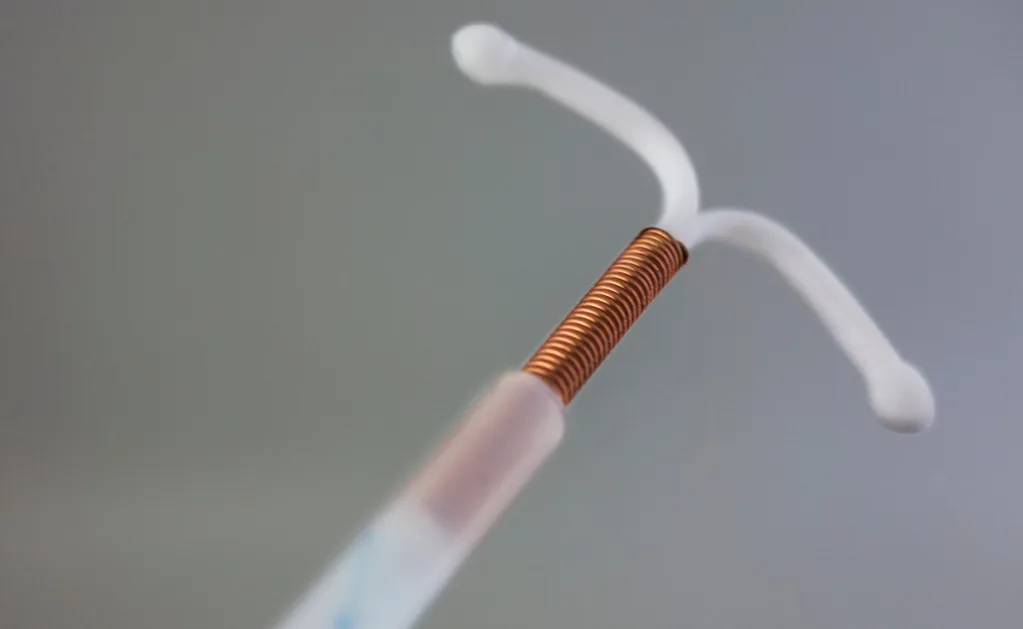Birth control. Contraception. The Pill. The coil. Whatever it is, methods of avoiding pregnancy have inherently been a conversation had by women since modern birth control methods were invented.
Of course, men have dipped in and out of this—many male scientists have helped to create successful forms of female birth control (notwithstanding the fact that they’ve never had to take it, nor experience its possible side effects themselves), and oftentimes heterosexual couples will discuss contraceptive options together.
But ultimately, the onus of avoiding an unwanted pregnancy often ends up with the woman. That comes with costs, both financial and physical, not to mention the mental load of booking the doctor’s appointments and taking a pill at the same time every day. But there’s one question we’ll always come back to: are there effective, reliable birth control options for cis men?
Right now, condoms and vasectomy are the main methods of male birth control with high rates of success (we won’t mention the pull-out method here for obvious reasons). Condoms are 98% effective in avoiding pregnancy, and a vasectomy is a permanent (but not irreversible) option.
On the other hand, women have a multitude of options like the oral pill, the coil or hormonal injections, all with a pregnancy prevention efficacy of over 99% on average, if they are used correctly. This, combined with the fact that pregnancy itself occurs in women and uterus owners, you begin to see why birth control has often felt like a woman’s responsibility—despite the negative side effects commonly associated with taking these hormonal forms of contraception.
But perhaps this won’t be for much longer. A number of studies and trials for various male birth control methods with promising success rates are in the works. Here, we look at the top contenders that could change the entire birth control game in years to come.
1. The Gel
Yes, you read this correctly—a contraceptive gel called NES/T is in its second phase of clinical trials, and it certainly looks to be one of the most advanced possibilities in the space right now.
Funded by The National Institutes of Health and developed in the United States, this contraceptive gel is applied to the shoulders and upper arms once a day.
The gel contains a progestin compound combined with testosterone, and once these are absorbed through the skin, the progestin blocks natural testosterone production in the testes, which subsequently reduces sperm production to low or non-existent levels. The gel’s testosterone replaces naturally occurring testosterone which means that males will maintain a normal sex drive and experience no adverse side effects. The treatment is fully reversible once the male stops applying the gel.
Hundreds of couples have partaken in trialling the drug for more than two years, and according to the Los Angeles Times, no pregnancies have occurred as a result. But there’s still a long way to go before the contraceptive could be distributed publicly—scientists predict it’s at least five years away.
2. The pill
Brushing your teeth and taking the pill each morning is commonplace for many women, and soon, the same could be said for men. Developed in the US and funded by the National Institutes of Health, a daily oral contraceptive for males called dimethandrolone undecanoate (DMAU) is in its initial trial phase.
The pill contains a male hormone not unlike testosterone and progestin. It was first trialled on 83 men in Washington, all of whom showed “marked suppression” of testosterone and hormones required for effective sperm production. Stephanie Page, a professor of medicine at the University of Washington, told Endocrine Society that “very few subjects reported symptoms consistent with testosterone deficiency or excess.”
That said, subjects did experience some weight gain and a decrease in their high-density lipoprotein cholesterol (also known as “good” cholesterol).
Page added that the results were “promising” and “unprecedented in the development of a prototype male pill”.
“Longer term studies are currently underway to confirm that DMAU taken every day blocks sperm production,” she added. These studies continue in 2022.

3. The IUD, for men
A biotech company in Virginia have created an injectable hydrogel coined as the “IUD for men”.
The company, Contraline, named the injectable ADAM. The hydrogel is implanted in the sperm duct, blocking any sperm from travelling through it for up to a year. When the gel reaches the end of its lifespan, it liquefies, removing the barrier stopping the sperm and reversing its contraceptive effects.
The hydrogel is completely non-hormonal, meaning men wouldn’t experience any of the mood swings or other side effects common to many female birth control methods.
Per Business Wire, Contraline secured US $10.7 million in funding to finance its trials and production in 2021. This was approved by the Human Research Ethics Committee based in Melbourne, Australia. Interestingly, the trials for the drug will take place here on home soil, with urologists in Melbourne set to conduct the study.
In a statement following the funding announcement, Dr. Alexander W. Pastuszak, who is joining Contraline in the study as Acting Chief Medical Officer, said the injectable “could be a game changer for men who want more control over their fertility as well as couples who struggle with their reliance on female contraception”.
The trial is set to be carried out this year.
4. Nonsurgical vasectomy
This vasectomy-like method, developed at the Indian Institute of Technology Kharagpur in India, is in very early stages—so early, in fact, that it’s yet to be tested on humans.
Known as Reversible Inhibition of Sperm Under Guidance (RISUG), it involves injecting gel into the penis in the tubes where sperm is stored. In it, a chemical compound, co-polymer of styrene and maleic anhydride, offers long term contraception of 10 to 15 years and has no obvious side effects, according to the Indian Journal of Medical Research.
The key thing about this contraceptive is that it could be fully reversible—after the compound has been injected into the penis, it can be reversed in the same way with another compound, dimethyl sulphoxide. So far, this method has only been tested on rats and monkeys, both with success.
As of 2022, funding is uncertain for RISUG, with clinical trials on humans yet to take place.

The conversation around birth control isn’t linear—and it likely never will be given how entrenched it’s always been in the life cycle of a woman. When all is said and done, women and people assigned female at birth are the ones who get pregnant, and even if their male partner is emotionally involved on a deep level, the physical element of pregnancy is something cis men will never experience. For men, the repercussions of a missed pill or gel application may not compare to the physical stress sparked by an unwanted pregnancy in a woman.
But even the possibility that birth control could be a man’s responsibility, as these aforementioned methods would have it, is a huge step forward in bringing equality and mutual responsibility to the conversation around contraception.
Imagine a day where during a one night stand, or a third date sleepover, or even a year into a relationship, a woman can ask of her sexual partner, “Are you on, or will you try birth control?” with confidence that the answer could be yes (otherwise, condoms it is!). What a time that would be.










